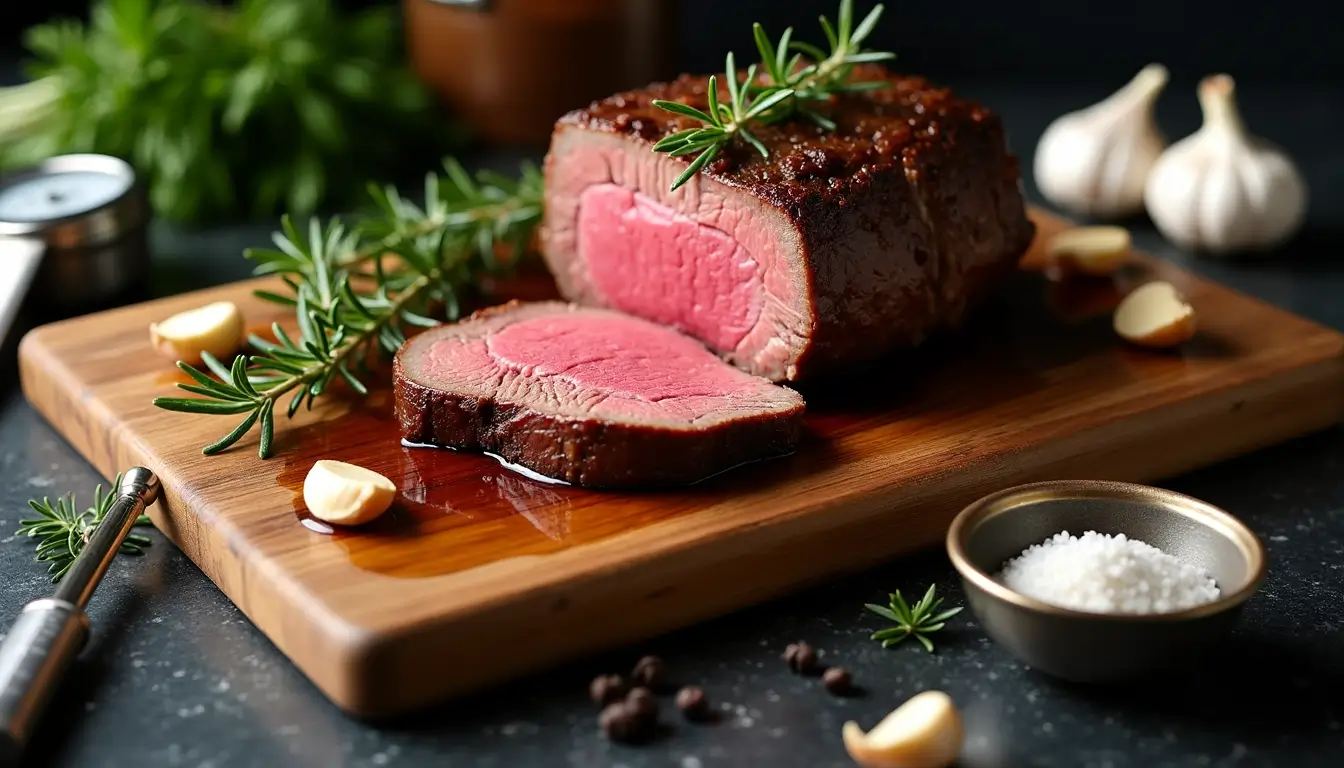Anyone can create a restaurant-quality ribeye roast recipe in their home kitchen. Yes, even beginner cooks!
This premium cut of beef feeds up to 6 people and makes the perfect centerpiece for special occasions and family gatherings. The cooking process takes just 75 minutes with minimal prep work. You can serve an impressive meal at your next holiday dinner or milestone celebration.
Success comes from following a few simple principles. A 5-pound roast needs about 20 minutes per pound at 325°F after the original high-heat sear. Your reward will be a perfectly cooked, juicy masterpiece that will amaze your guests.
Want to become skilled at this quickest way to cook a ribeye roast? Let’s tuck into the exact steps you need to create a memorable meal that your guests will talk about.
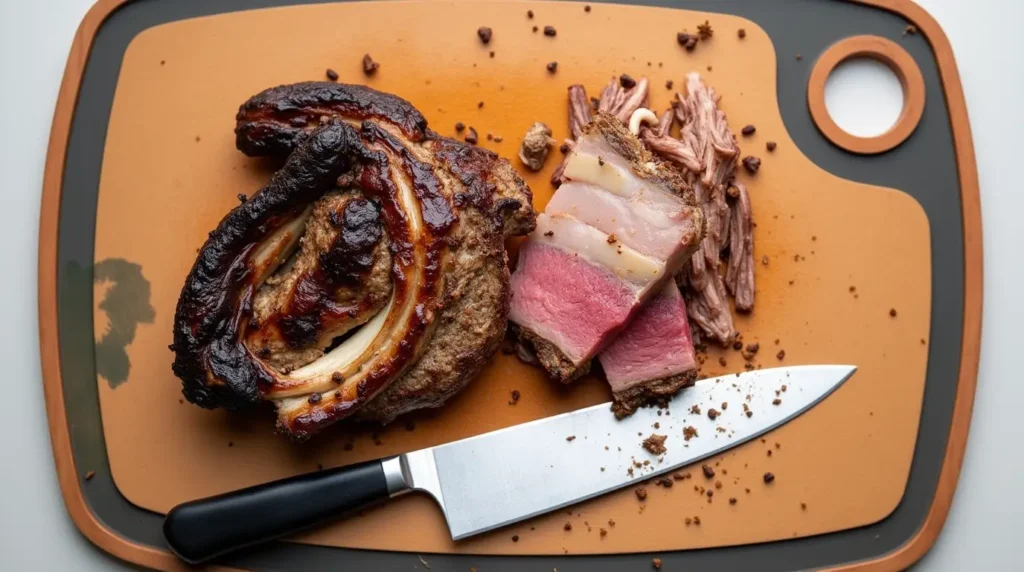
Table of Contents
Planning Your Special Occasion Ribeye Roast
Smart planning leads to a perfect ribeye roast. We purchased our roast 3-4 days before cooking to ensure optimal freshness.
Timeline from purchase to serving
The smaller end of the ribcage offers maximum tenderness and flavor in your roast selection. USDA Prime grade markings indicate superior quality standards. Your refrigerator will keep the roast fresh until cooking day, ready for the upcoming celebration.
Calculating portions per person
Your serving style determines the amount of ribeye roast needed. A formal sit-down dinner requires one pound per person. It also needs half a pound per guest at the time you host a holiday buffet.
This practical guide helps with different group sizes:
| Number of Adults | Bone-in Roast | Boneless Roast |
|---|---|---|
| 3-4 people | 4 lbs | 3 lbs |
| 4-5 people | 5 lbs | 4 lbs |
| 5-6 people | 6 lbs | 5 lbs |
| 6-7 people | 7 lbs | 6 lbs |
| 8-10 people | 10 lbs | 8 lbs |
Each pound of bone-in ribeye roast yields about 2½ three-ounce servings of cooked meat. Boneless roasts provide three three-ounce servings per pound. One rib section serves two people comfortably in a bone-in roast.
Special occasions might need extra portions. A four-bone roast serves eight guests generously. Note that leftovers beat running short – extra meat makes excellent sandwiches or fits perfectly into next day’s dishes.
Seasoning Secrets
Becoming skilled at seasoning can turn a simple ribeye roast into an extraordinary dish. We used two methods that really stand out: the classic dry rub and the rich garlic butter coating.
Dry rub combinations
A well-laid-out dry rub seeps deep into the meat and creates layers of flavor. The simple yet quickest way is to combine kosher salt and coarse black pepper. You can boost the mixture with garlic powder, dried sage, and dried thyme to add more depth.
Here’s a proven combination that packs bold flavors:
| Base Ingredients | Optional Additions |
|---|---|
| Kosher Salt | Smoked Paprika |
| Black Pepper | Dried Oregano |
| Garlic Powder | Cayenne Pepper |
| Dried Rosemary | Lemon-Pepper |
| Italian Herbs | Brown Sugar |

Garlic butter coating method
Start the garlic butter method by softening one cup of butter. Mix the softened butter with six minced garlic cloves until they blend well. Fresh herbs like rosemary and thyme in the butter will create an aromatic crust as the roast cooks.
The butter coating needs these steps:
- Let the butter reach room temperature so it spreads easily
- Mix it with minced garlic and chosen herbs
- Spread the mixture evenly over the roast with a spatula
Timing is everything
The right timing plays a vital role in flavor development. Salt the roast the night before cooking to get the best results. If you’re preparing it the same day, season at least 45 minutes before cooking, though 90 minutes works better.
Let the meat sit at room temperature for 30-60 minutes before cooking. This step will give a more even cook and helps seasonings stick better to the meat’s surface. Mix all ingredients but one – the salt – if making a dry rub ahead of time to keep moisture in.
The butter method lets you prepare the compound butter up to three days ahead and store it in the fridge. Just bring it back to room temperature so it spreads smoothly. Note that leaving the seasoned roast uncovered during rest time creates a better crust during cooking.
The Never-Fail Cooking Process
The right temperature settings and timing will give a perfectly cooked ribeye roast every time. This method combines high-heat searing with controlled temperature cooking to achieve the best results.
Oven temperature settings
Your oven should be preheated to 500°F (260°C). This high temperature creates a flavorful crust on the roast’s exterior. The heat should be reduced to 325°F (165°C) for the rest of the cooking process.
The best results come from consistent oven temperatures throughout each phase. You should avoid opening the oven door while cooking because temperature fluctuations can affect cooking time and evenness.
Cooking time formula
The simple formula for cooking time depends on the roast’s weight. You’ll need about 20 minutes per pound at 325°F. Here’s a detailed breakdown for different doneness levels for a 3-4 pound roast:
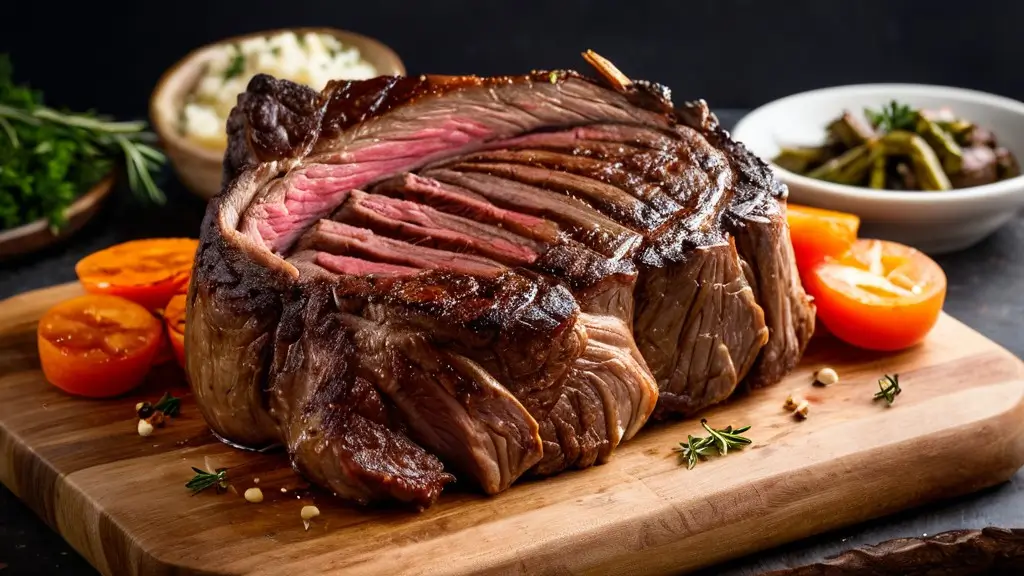
| Doneness Level | Cooking Duration | Internal Temperature |
|---|---|---|
| Rare | 50-70 minutes | 120-125°F |
| Medium Rare | 70-90 minutes | 130-135°F |
| Medium | 80-100 minutes | 140-145°F |
| Medium-Well | 90-110 minutes | 145-150°F |
| Well-Done | 100-120 minutes | 155-160°F |
Here’s what you need to do:
- Sear at 500°F for 15 minutes to develop a strong crust
- Reduce temperature to 325°F
- Continue cooking based on weight calculation
- Monitor internal temperature with a meat thermometer
- Remove roast 8-10 degrees before target temperature
The internal temperature will rise about 8-10 degrees during the resting period. This carryover cooking will help reach the desired doneness without overcooking. A 3-pound roast usually takes about 60 minutes total cooking time, while a 6-pound roast needs around 120 minutes.
Note that cooking times can vary based on your oven’s performance and the roast’s starting temperature. A reliable meat thermometer is the most accurate way to achieve your preferred doneness level.
Common Mistakes to Avoid
The difference between a perfect ribeye roast and a disappointing dinner lies in avoiding common pitfalls. Understanding these significant mistakes helps you create excellent results consistently.
Temperature mishaps
One of the most serious errors is putting the roast directly from refrigerator into the oven. Cold meat takes longer to cook and doesn’t cook evenly. Your roast should sit at room temperature for a full 3 hours before cooking to get the best results.
Your roast’s success depends on accurate internal temperature readings. A reliable meat thermometer is a vital tool, especially when you have larger cuts. To achieve medium-rare perfection, take the roast out at 125°F, since the temperature will rise about 5-10 degrees during rest.
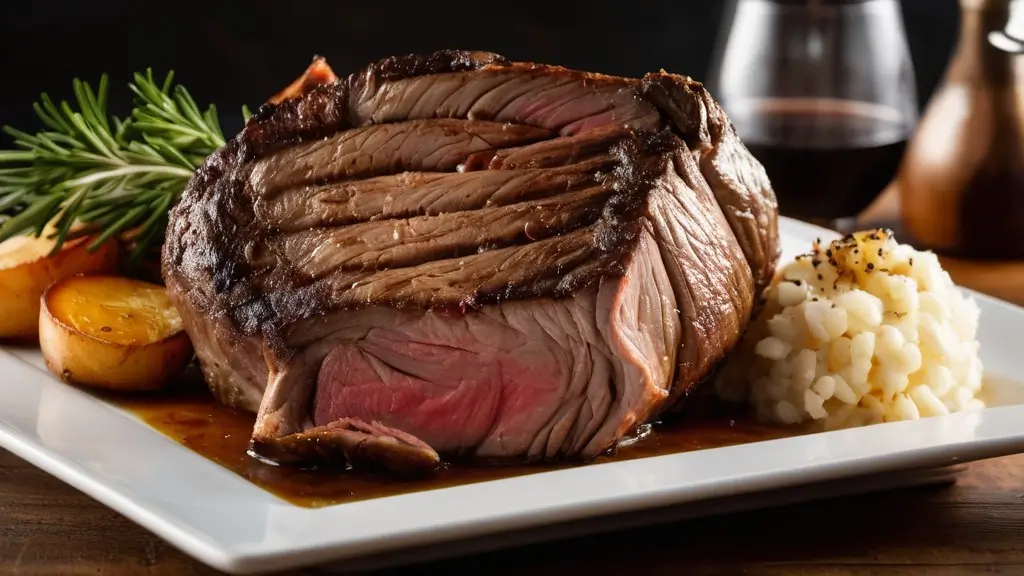
| Target Doneness | Pull Temperature | Final Temperature |
|---|---|---|
| Medium Rare | 125°F | 130-134°F |
| Medium | 130°F | 135-140°F |
Resting period errors
A quick 10-minute rest isn’t enough for large roasts, contrary to what many believe. The meat needs at least 30 minutes to rest properly. The outer temperature gradually drops while interior temperatures rise slightly during this time.
The resting phase allows:
- The protein fibers to relax
- Even redistribution of juices
- Temperature stabilization throughout
- Clean and easy carving
Seasoning mistakes
Cooks often under-season or time their seasoning poorly. The best time to season is during the room temperature rest period. Notwithstanding that, salt shouldn’t stay on the surface too long as it pulls out moisture – exactly what you don’t want.
You should apply kosher salt generously to all surfaces, including the sides. Let the salt penetrate for 5 minutes before adding freshly ground pepper. Note that seasoning only penetrates about 2 millimeters into the roast.
Many people make the mistake of experimenting with powerful spice rubs. This premium cut tastes best with classic salt and pepper seasoning. Focus on getting the seasoning amounts right rather than creating complex spice combinations.
The perfect ribeye roast comes down to proper temperature control, enough resting time, and the right seasoning approach. These three elements combine to create a perfectly cooked roast that meets your expectations.
Transforming Leftovers
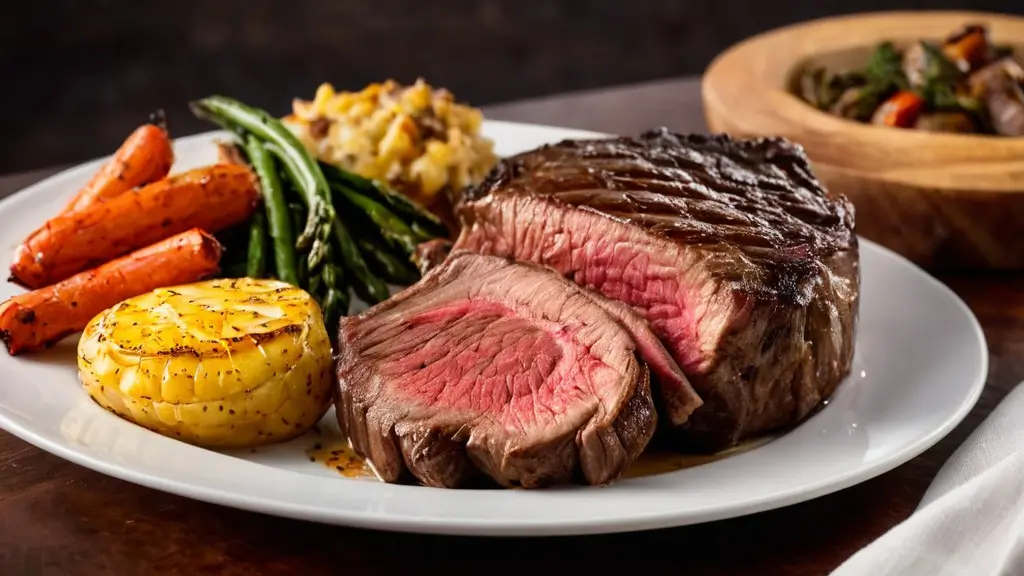
You can enjoy your ribeye roast long after the original meal with proper storage and creative reuse. We focused on understanding the right storage methods that will give you both safety and flavor preservation.
Storage guidelines
The best way to store leftover ribeye roast is to wrap it tightly in plastic wrap while keeping it whole. Place the wrapped roast in an airtight container or zip-top bag to preserve it well. Your refrigerator temperature should stay below 40°F for food safety.
Here’s how long you can store your roast:
| Storage Method | Duration | Temperature |
|---|---|---|
| Refrigerator | 3-4 days | Below 40°F |
| Freezer | 2-6 months | 0°F |
You should pour a few spoonfuls of remaining au jus over the roast before storing to keep it moist. If you’re freezing it, press out excess air from freezer bags or wrap it well in heavy-duty aluminum foil.
Reheating methods
Your ribeye roast will taste best when reheated in the oven. Heat your oven to 250°F and set the meat on a wire rack inside a rimmed baking sheet. Let it warm until the internal temperature hits 110°F, which takes about 60-90 minutes. Then pat the meat dry and give it a quick sear in a hot, oiled skillet for 1-2 minutes per side to bring back the crust.
To steam on the stovetop:
- Add 1-3 inches of water to a pot
- Place meat in a steamer basket over simmering water
- Wrap slices in aluminum foil with a splash of broth
- Steam for 3-6 minutes until heated through
Leftover recipe ideas
Your leftover ribeye roast can become completely new dishes. Cold roast sliced thin makes great sandwiches with horseradish mayo, lettuce, and tomato. The meat works well in many dishes when cut into the right size.
The roast can go into soups and stews, make a delicious shepherd’s pie, or become BBQ sandwiches. Dishes with liquid help warm the meat without drying it out. You might want to dice it for breakfast hash or cut it into chunks for a hearty goulash.
Slice the meat while it’s cold to get the thickness you want. Let the slices reach room temperature before adding them to cold dishes, or warm them slightly in a 375°F oven for hot dishes. This premium cut stays delicious when stored properly and used creatively, giving you many chances to enjoy its rich flavor.
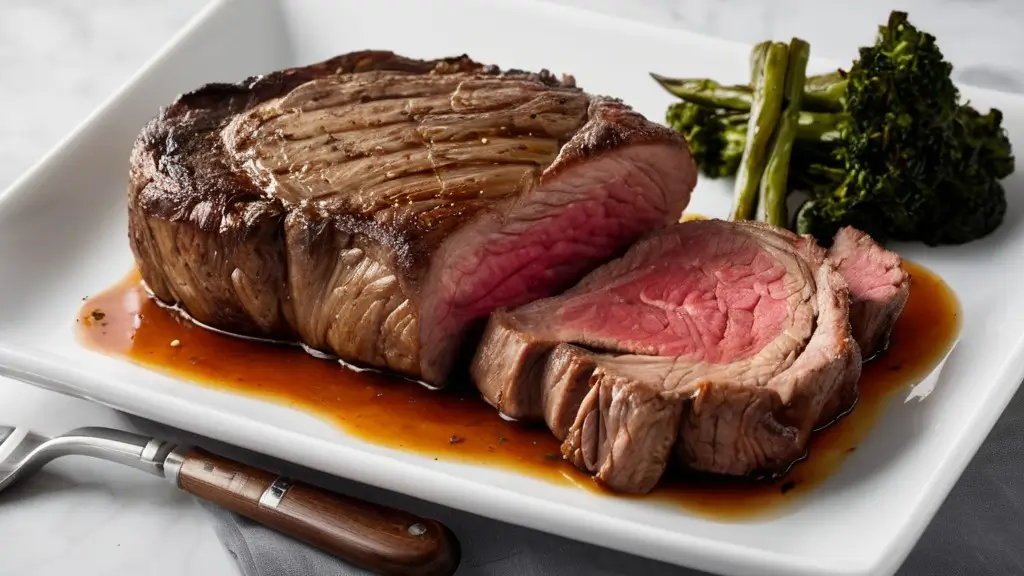
Conclusion
A perfectly cooked ribeye roast will lift any special dinner to new heights. You can create restaurant-quality results in your home kitchen if you follow the right steps.
The path to success starts with calculating portions and choosing seasonings. Precise temperature control and timing are the foundations of consistent results. The process also helps you avoid common mistakes that lead to disappointment and waste.
Smart storage of leftovers makes your investment go further. You can turn yesterday’s roast into today’s tasty meals with proper storage and creative ideas. Our website recipesnutritious.com offers more recipes and food ideas to enhance your cooking journey.
Note that each time you cook this classic dish builds your confidence and expertise. Don’t wait for a special occasion – create one by treating your family to this impressive yet doable main course.
FAQs
Q1. How long should I cook a ribeye roast? The cooking time depends on the roast’s weight and desired doneness. Generally, cook for 20 minutes per pound at 325°F (165°C) after an initial 15-minute sear at 500°F (260°C). For a medium-rare 3-4 pound roast, expect 70-90 minutes of total cooking time.
Q2. What’s the best way to season a ribeye roast? For optimal flavor, use a simple combination of kosher salt and coarse black pepper. Apply the seasoning generously to all surfaces of the roast about 45-90 minutes before cooking. You can also enhance the flavor with a garlic butter coating or add herbs like rosemary and thyme to your seasoning mix.
Q3. How do I ensure my ribeye roast is cooked to the right temperature? Use a reliable meat thermometer to check the internal temperature. For medium-rare, remove the roast from the oven when it reaches 125°F (52°C). The temperature will rise another 5-10 degrees during resting. Let the roast rest for at least 30 minutes before carving to allow juices to redistribute.
Q4. How much ribeye roast should I plan per person? For a formal dinner, plan on one pound per person. For a buffet-style meal, calculate half a pound per guest. A 4-bone roast (about 8-10 pounds) can generously serve 8 people. It’s better to have leftovers than to run short, as extra meat can be used in other dishes.
Q5. What can I do with leftover ribeye roast? Leftover ribeye roast can be transformed into various dishes. Slice it thin for sandwiches, dice it for breakfast hash, or add it to soups and stews. You can also use it in shepherd’s pie or BBQ sandwiches. Proper storage in the refrigerator (3-4 days) or freezer (2-6 months) helps maintain its quality for future use.

